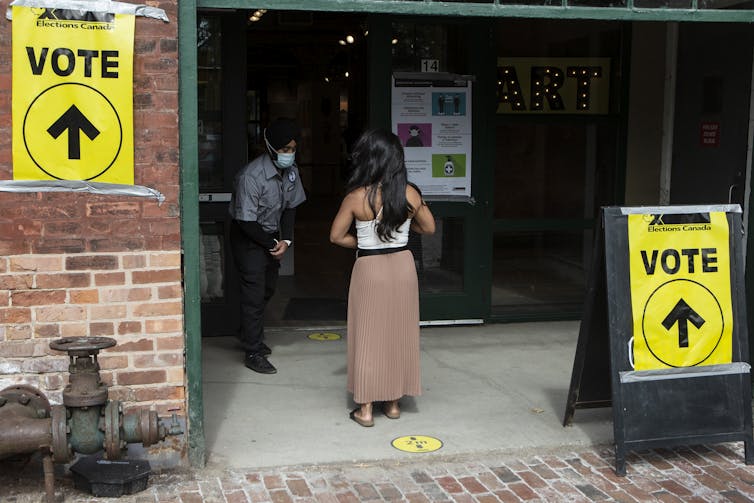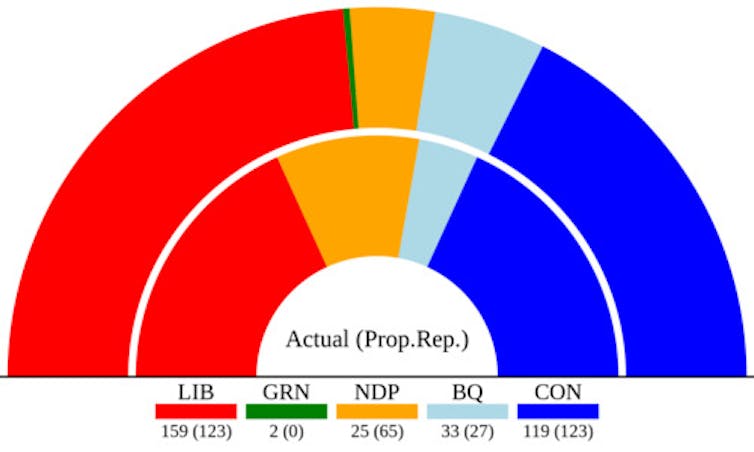The recent federal election produced the second minority government in a row — and the fifth since 2004.
Neither Conservatives nor Liberals received more than 34 per cent of the popular vote nationwide, but parliamentary representation remains heavily distorted.
Canada’s first-past-the-post electoral system works poorly when there are lots of three-way races and even some four-way races. Seats can be won with far less than a majority, and some regions are disproportionately represented by a single party. There is also a growing rural-urban divide in representation that is exacerbating political fault lines.
There is a compelling alternative used by many other nations: proportional representation, where seats in parliament reflect vote shares. There are three concerns, however: local representation, fringe parties and weak governments. Nonetheless, a smartly designed proportional system can overcome the first two concerns, and parliamentary protocol can address the third.
A new idea for electoral reform
The menu of electoral systems used to feature either proportionality, local representation or awkward combinations of the two.
My own research offers a new electoral system that can deliver proportionality and even enhance local representation. It combines provincial proportional representation with electoral districts represented by two members of Parliament instead of one.
People vote for parties instead of local candidates, and elected members from each party have to represent two districts each so that the most voters are represented by their preferred party choice from each riding.

In almost all instances, the “senior” member who received more votes than the “junior” member in a riding will be from the same party as with our current system.
But because each district has two members of Parliament, there is better local representation overall, and there is more competition among parties for effective representation of each district.
Each parliamentarian has a bit more work than before, looking after two districts rather than one. Because voting patterns cluster locally, most parliamentarians will look after neighbouring districts. Dual representation makes it much more likely that districts are represented by someone from a party in government. Voters have two members of Parliament they can appeal to with their local concerns.
Provinces keep same number of seats
Proportionality is achieved separately for each province, reflecting Canada’s federal structure. Each province would maintain their current number of seats, while the three territories would continue to elect their member of Parliament directly. Provincial proportionality means that only Albertan parliamentarians would represent Alberta, and only Québecois parliamentarians would represent Québec.

To prevent regional and fringe parties from gaining undue representation and influence, proportionality needs strong thresholds: a five per cent hurdle nationwide and for each province. In September’s election, this threshold would have applied to both the Green Party and the People’s Party of Canada (PPC). Maxime Bernier’s PPC came within a whisker of the first hurdle, receiving 4.94 per cent of the popular vote nationwide.
Some critics associate proportionality with fractious parliaments, instability, weak governments and fiscal profligacy. But this outcome is unlikely in Canada because there are well-established major parties that will continue to vie for first place.
Parliamentary protocol already ensures that governments can’t be toppled too easily. The “confidence convention” requires a government to enjoy the support and confidence of the majority in the House of Commons. The current system encourages premature parliamentary dissolution in a quest for majority government. But majority governments remain elusive.
Parliamentary composition
What would the electoral map look like under proportionality?
Conservatives would gain four seats (123 instead of 119), Liberals would lose 36 seats (123 instead of 159), the NDP would gain 40 seats (65 instead of 25) and the Bloc Québécois would lose six seats (27 instead of 33).
The Green Party and People’s Party would be shut out due to the five per cent hurdle. Parliament would retain a centre-left majority, but with a rather different composition. (Riding-by-riding results are on my web page.)

Electoral reform creates winners and losers. In 2021, proportionality would have benefited New Democrats the most.
Unsurprisingly, Liberals prefer milder versions of electoral reform such as ranked ballots. Conservatives prefer none at all.
After Liberals won a majority government in 2015, their appetite for electoral reform quickly vanished. Ultimately, electoral reform may only come about if a smaller party — likely the NDP — holds the balance of power and makes electoral reform the price to pay for supporting a minority government.
The fact remains that voters care more about parties than local candidates. Proportionality would be fairer, but effective local representation is also needed and can actually be improved by maximizing preferred-party representation in each district.
My research shows that local representation does not need to be diluted to gain proportionality. Canada deserves a 21st-century electoral system that fits its unique political landscape.

